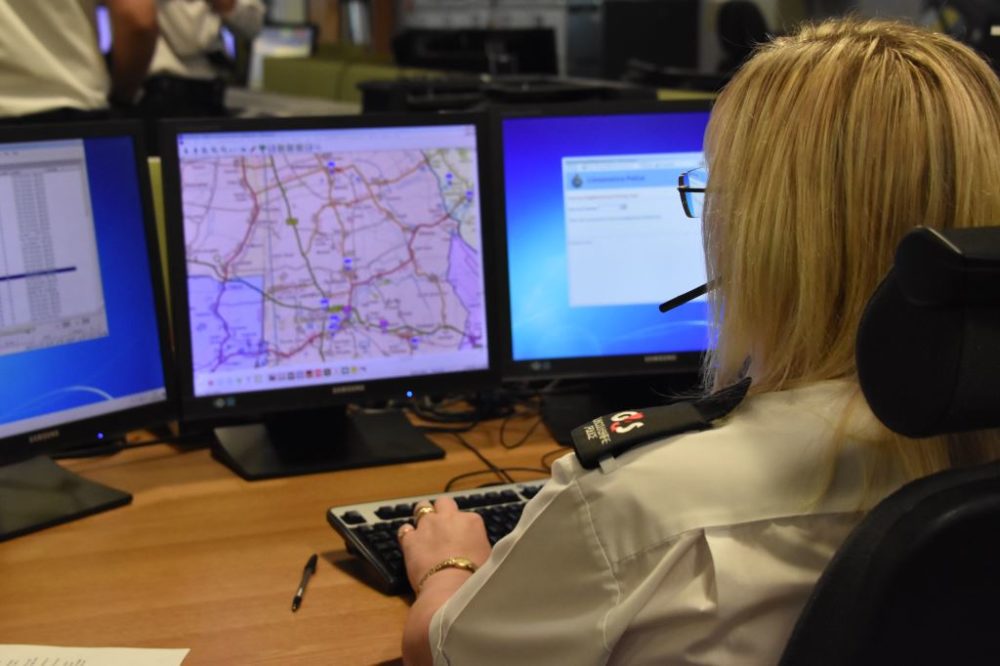Here’s an idea: If criminals don’t stand still, neither should the police. (No kidding Sherlock – Ed).
With this in mind, Information Age wanted to find out what the police are actually doing to keep with the times, so we spoke with Andrew White, COO at Lincolnshire Police, to learn all about their digital transformation journey.
Well, first off, he told me their officers have ditched their traditional pocket notebooks and opted for handheld mobile devices.
White said this is thanks to its partnership with G4S, who successfully deployed Motorola Solution’s Pronto technology.
“This allows officers to complete a variety of important policing functions, such as generating crime reports or information on road traffic collisions on their mobile device,” explained White. “Before we started using Pronto, officers would have to return to the station to complete forms which they can now do remotely while they are out on shift, enabling them to spend more time helping their local community.”
Thanks to its partnership with G4S, who recently reached an agreement with Motorola Solutions on behalf of the force, Lincolnshire will be the first UK police force to run a control room on a cloud-based system.

“The key thing for us is always how we ensure that our officers are out in the community, visible and available to the public as much as possible, added White. “That means technology has to be easy to use and reduces the burden of bureaucracy to help officers do their work while they are talking to victims and witnesses.”
On average, officers are saving about one hour per shift. That is worth about £1.8 million to the force every year. It also means that officers have more accurate information at their fingertips, they can cross check against national and local police databases, and that puts them in a better position to help the public. Police can now give crime numbers to victims on the spot for example, which helps them speed things up with their insurance company.
Ineffective technology threatens the police force
Challenges
“As with all new technology, the technology itself is only half of the challenge,” explained White. “Someone has to use it, so we have to bring all of our officers with us. Some of our best, most experienced officers with 10 – 20 years service, are not always that excited about being given new technology and having to change the way they work.
“The onus is on us to demonstrate that technology is designed with their operational requirements in mind. It has to work in the field, in all the situations they face. When we gave officers Pronto and they saw it saved them time and allowed them to do the administrative part of their job more easily and they didn’t need to return to the station, that’s when you get buy-in across the force.”
Finding talent
As Information Age has reported before, the persistent digital skills gap often leads organisations to a dead end in their digital transformation journeys, but, amazingly White said they have not yet been affected.
This is due, he claims, to working with partners who were able to reach out to the ‘tech’ community to identify and employ relevant individuals on its behalf.
Lincolnshire also supports the national Cyber Specials Cyber volunteers (CSCV) programme where it will be in a position to call upon industry experts to assist in filling any digital skills gap.
Fixing the confidence crisis in public sector IT
Whats next?
For White, the trend towards digitisation in policing is only going in one direction.
“There won’t be a day when digitisation is finished, or we can say ‘it’s done, we’ve got all the technology we need’,” he explained. “It’s a continual process, so the best approach for us is to ensure that the technology that we adopt now will help us in future and won’t be out of date in six months.
“That is one of the benefits of CommandCentral CRS, additional capabilities such as analytics can be layered on top; it is very responsive to our requirements as they may change in the future.”
What are the 5 biggest problems artificial intelligence will solve in the public sector?








